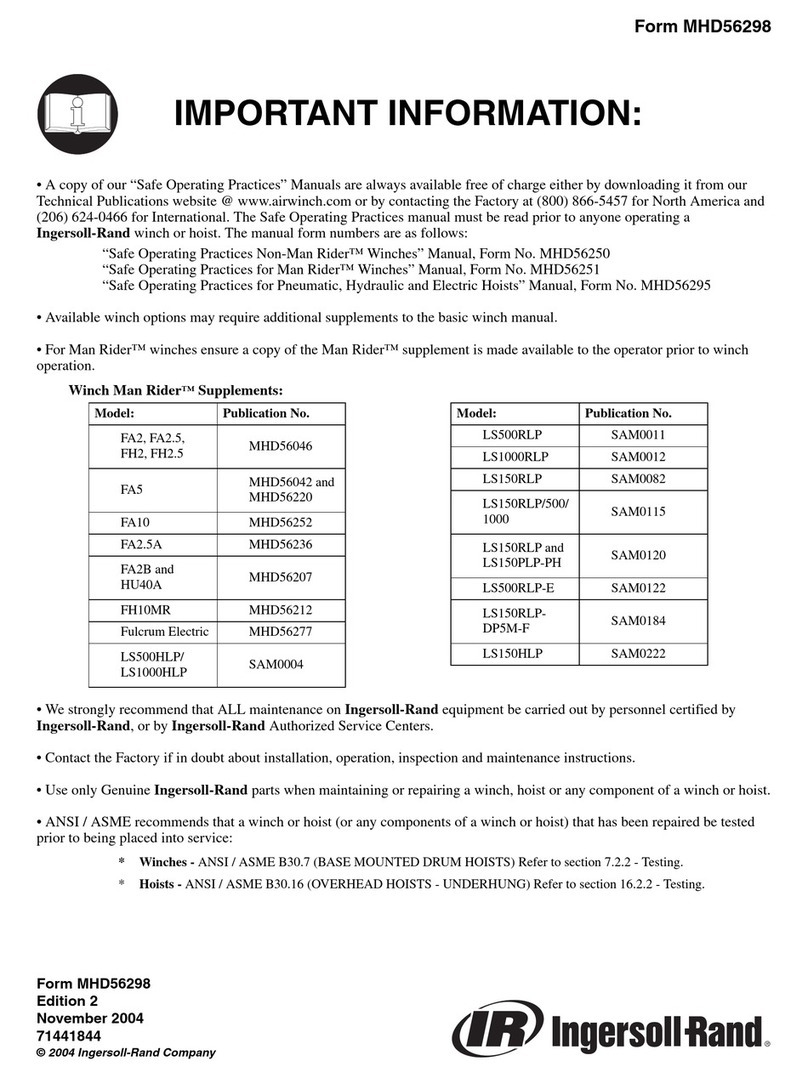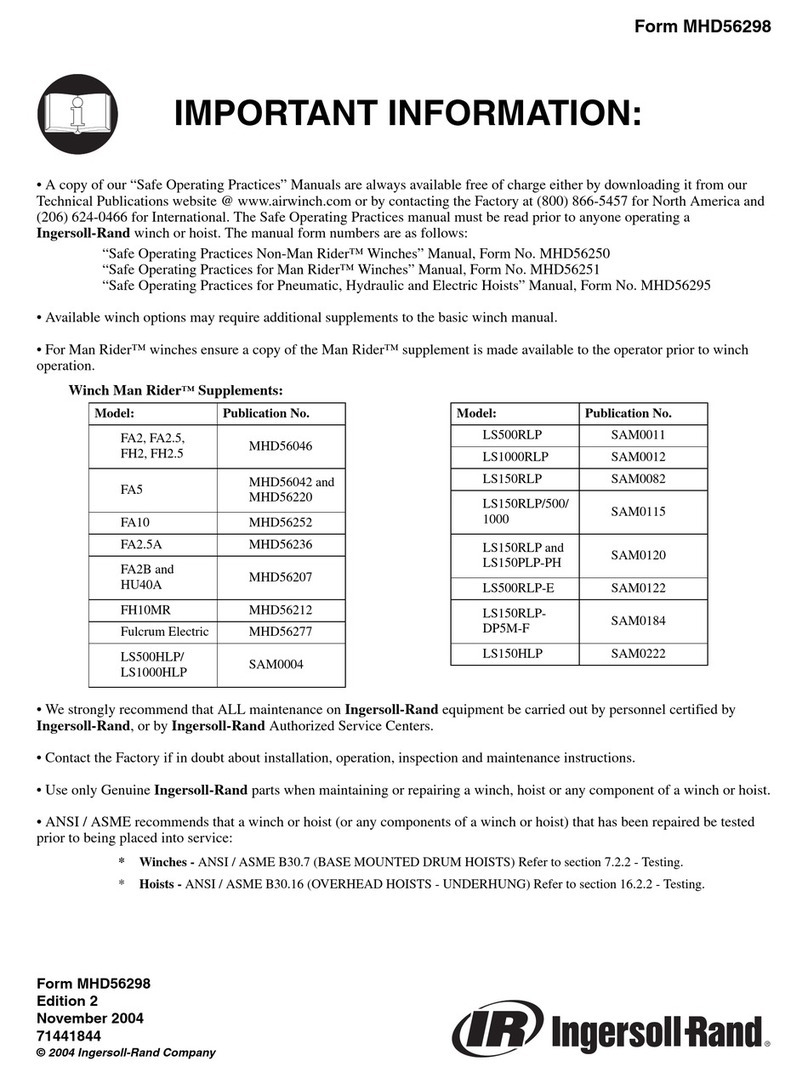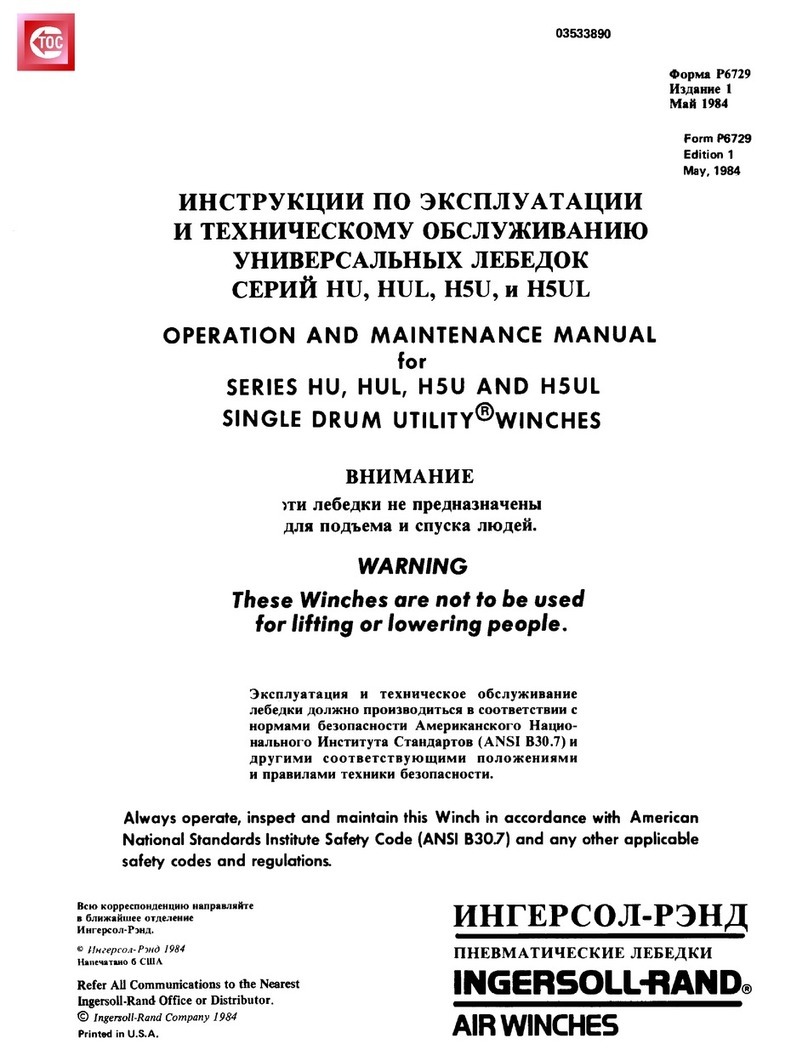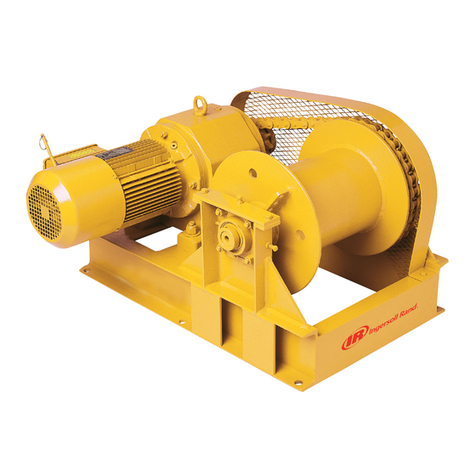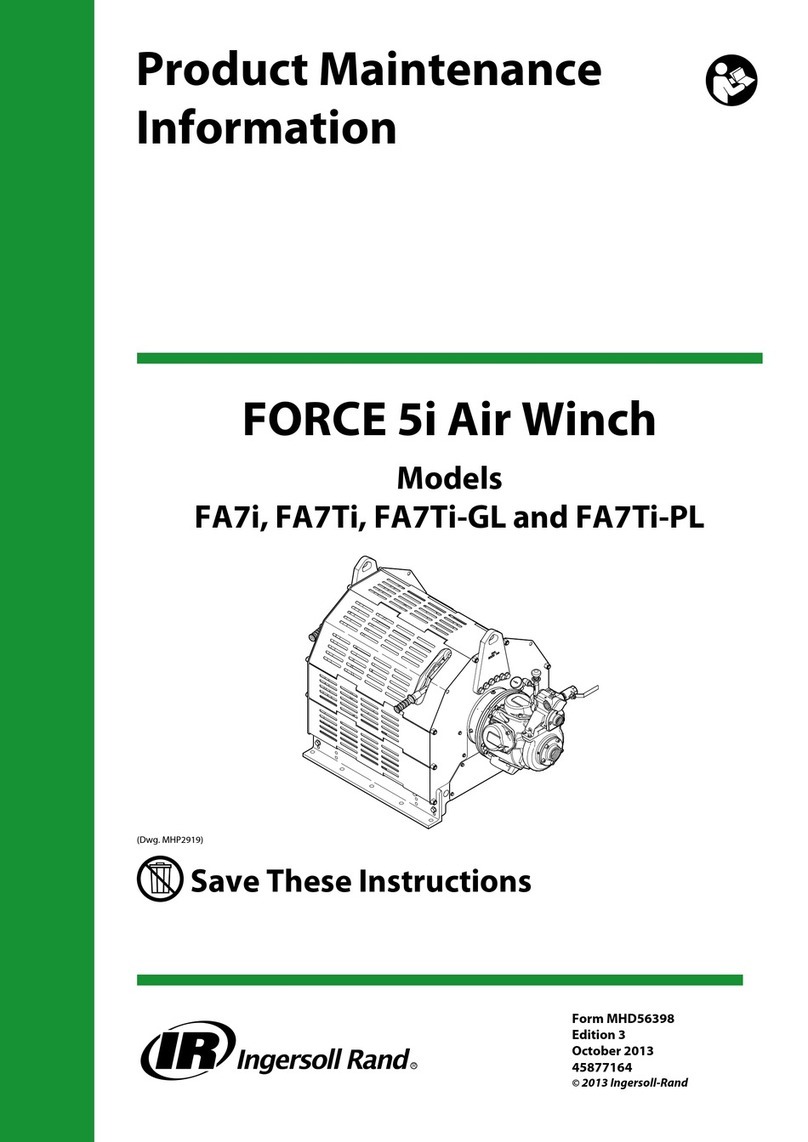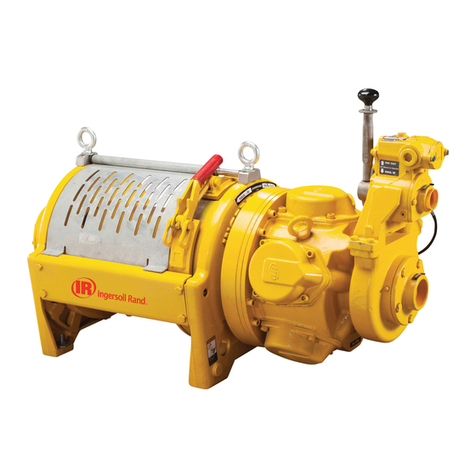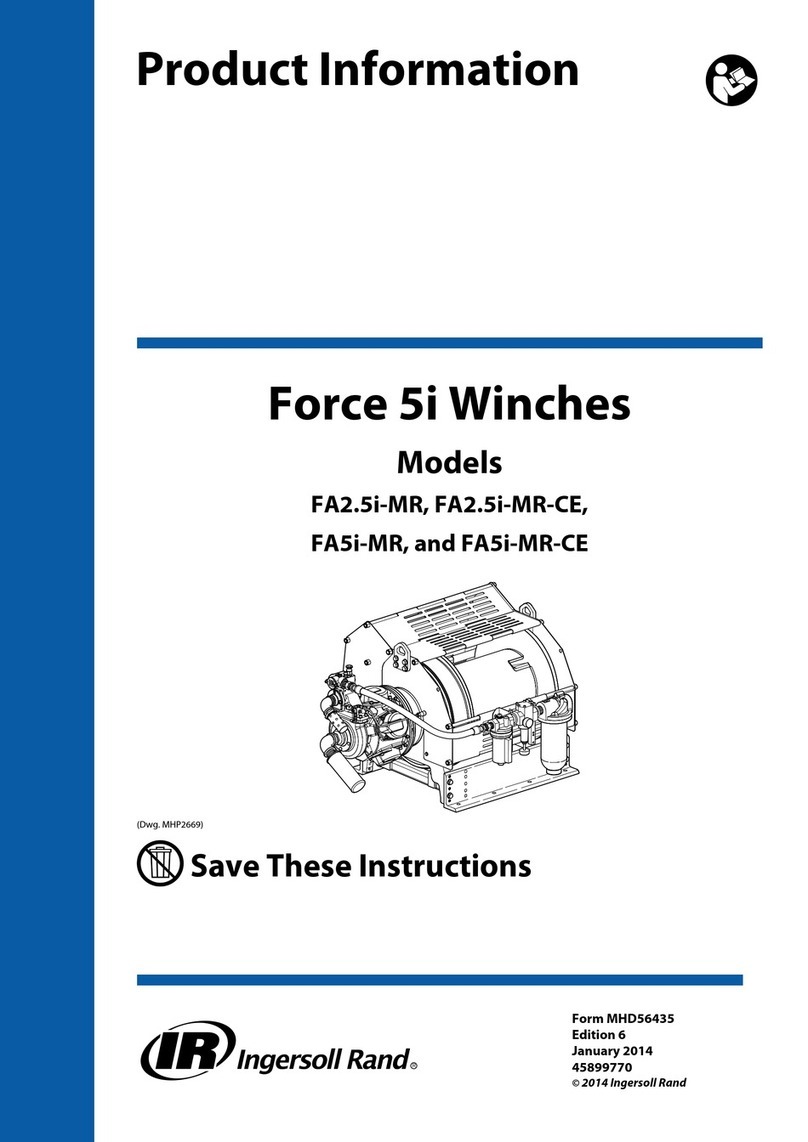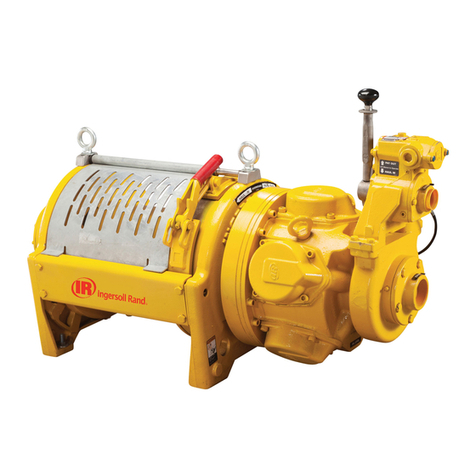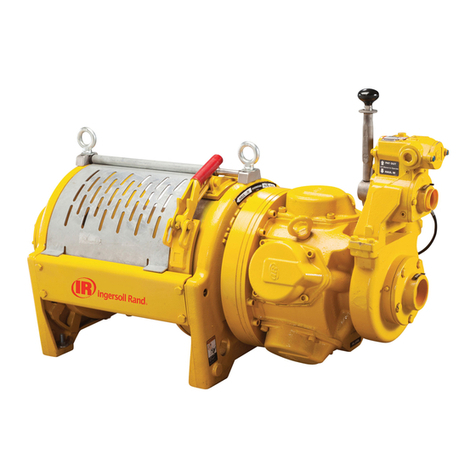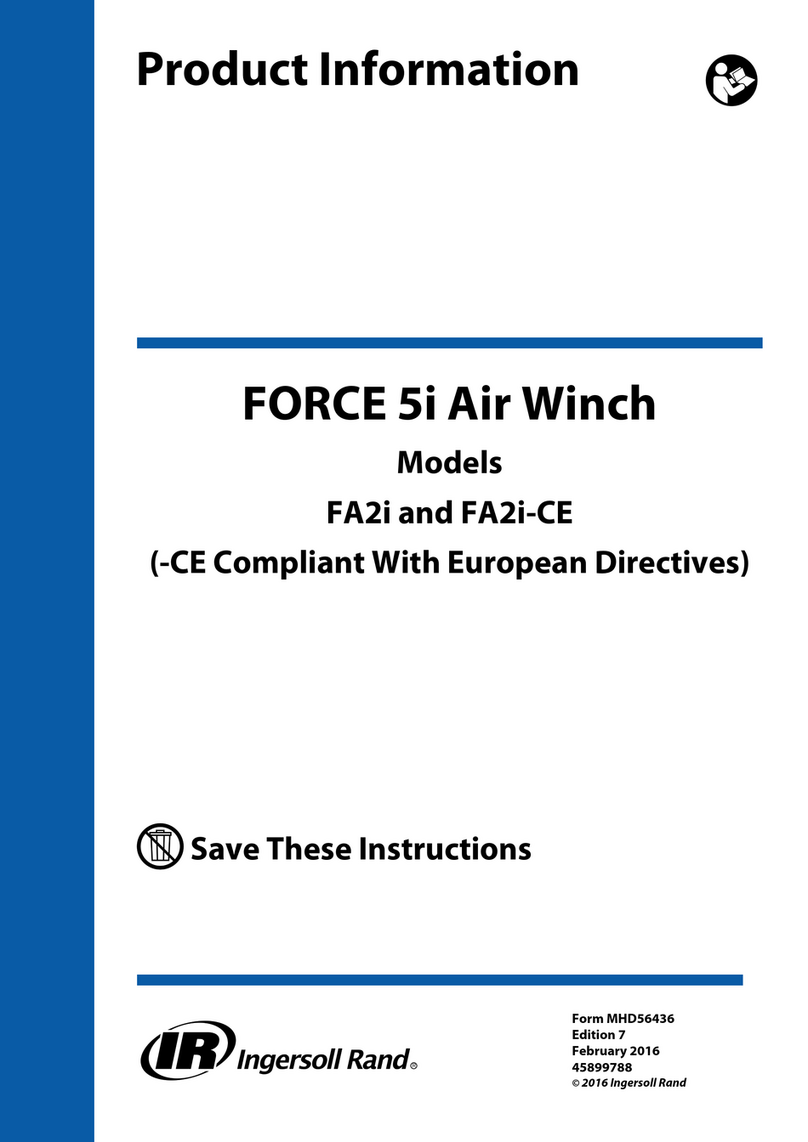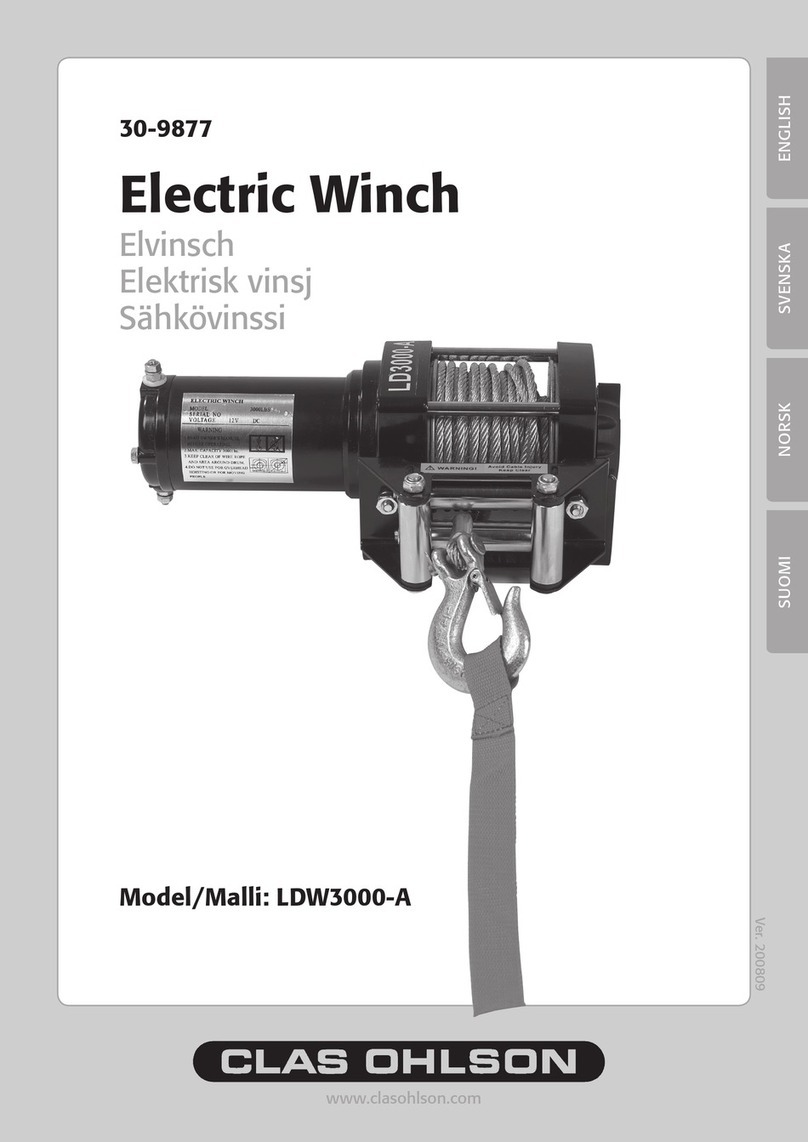
5. Inspect filter elements that have been removed from the system for signs of
other system damage.
6. Do not return to the system any fluid that has leaked out.
7. Always keep supplies of fresh fluid covered tightly.
8. Use clean containers, hoses and funnels when filling reservoir. Use of a filter cart
when adding fluid is highly recommended.
9. Use common sense precautions to prevent entry of dirt into components that
have been temporarily removed from the system.
10. Make sure that all clean-out holes, filler caps and breather cap filters on the
reservoir are properly fastened.
11. Donotrun the system unlessallnormally provided filtration devicesarein place.
12. Make certain that the fluid used in the system is a type recommended by the
manufacturers of the system or components.
The above recommendations are based on an open system equipped with micro-
air breathers. Open systems without micro-air breathers are not recommended.
Visual inspection cannot be used to determine cartridge replacement. Particles
below 40 microns are not visible to the human eye.
Before changing from one type of fluid to another (for example, from a petroleum
base to a fire-resistant fluid) consult component and filter manufacturers on the
selection of the fluid and the filters that should be used. Follow recommended
flushing procedures when changing fluids. Also consult ANSI B93.5M-1979 “Practice
for the Use of Fire Resistant Fluids for Industrial Hydraulic Fluid Power Systems.”
nDisassembly
NOTICE
• Refer to the Product Parts Information Manual for drawings unless
specified elsewhere.
nGeneral Disassembly Instructions
The following instructions provide the necessary information to disassemble,
inspect,repair, andassemblewinch.PartsdrawingsareprovidedintheProductParts
Information Manual.
If product is being completely disassembled for any reason, follow the order of the
topics as they are presented. It is recommended that all maintenance work on the
winch be performed in a clean dust free work area.
In the process of disassembling the product, observe the following:
1. Never disassemble product any further than is necessary to accomplish needed
repair. A good part can be damaged during the course of disassembly.
2. Never use excessive force when removing parts. Tapping gently around
perimeter of a cover or housing with a soft hammer, for example, is sufficient to
break the seal.
3. Do not heat a part with a flame to free it for removal unless part being heated is
already worn or damaged beyond repair and no additional damage will occur
to other parts.
In general, winch is designed to permit easy disassembly and assembly. The use
of heat or excessive force should not be required.
4. Keep work area as clean as practical, to prevent dirt and other foreign matter
from getting into bearings or other moving parts.
5. All seals, gaskets and ‘O’ rings should be discarded once they have been
removed. New seals, gaskets and ‘O’ rings should be used when assembling the
winch.
6. When grasping a part in a vise, always use leather-covered or copper-covered
vise jaws to protect the surface of the part and help prevent distortion. This is
particularly true of threaded members, machined surfaces and housings.
7. Do not remove any part that is a press fit in or on a subassembly unless the
removal of that part is necessary for repairs or replacement.
8. When removing ball bearings from shafts, it is best to use a bearing puller. When
removing bearings from housings, drive out bearing with a sleeve slightly
smallerthanoutside diameter ofbearing.The end ofsleeveorpipe that contacts
bearing must be square. Protect bearings from dirt by keeping them wrapped
in clean cloths.
nWinch Guard Disassembly
Refer to Dwg. MHP2826.
1. Remove screws (37) from uprights (5).
2. Remove drum guard (36) and store with screws until reassembly.
nWinch Disassembly
Refer to Dwgs. MHP2824, MHP2826 and MHP2846.
1. Shut off and bleed down hydraulic oil supply to winch.
2. Disconnect and tag all hydraulic lines.
3. Remove winch from its mounting and set in a clean area on a sturdy work bench.
4. Remove tubing assemblies (80) and (81).
5. Remove capscrews (96) and washers (95) securing control valve (94) to guard
(35). Remove control valve.
6. Remove capscrews (34), lockwashers (8) and guard (35).
7. Tag and remove hydraulic lines to valve (98).
8. Remove capscrews (84) and valve (98) assembly.
9. Remove and store ‘O’ rings (99).
10. Position several blocks of wood on the work bench and stand the winch in a
vertical position with the motor end up.
11. Remove two capscrews (71) and lockwashers (70) that secure motor (72) to
motor adapter (68) and extract motor (72).
12. Removeoildrain plugs(14)and returnthewinch toahorizontal positiontodrain
the oil from the reducer housing into a suitable container.
13. Remove capscrews (56) and washers (55) from flange on brake housing cover
(53). Pull disc brake assembly from upright (5).
14. Remove end cover (3).
a. Pull bearing (6) from the end cover (3).
15. Remove capscrews (7) and lockwashers (8) from uprights (5).
16. Remove spacers (45) and (46).
17. Remove the drum (10) from the winch.
18. Remove drum wear rings (40) from the drum if they require replacement.
19. Remove retainer ring (11) and exhaust washers (41).
nFree Spool Disassembly
Refer to Dwg. MHP2620.
1. Removecapscrews (7)andwashers(8)that secureone upright(5)with freespool
assembly from winch assembly.
2. Unscrew and remove knob (238) from shaft (245).
3. Turn lever (237) to disengage free spool and remove free spool assembly from
end cover (3).
4. Tap pin (236) from lever (237) and remove lever.
5. Pry bushings (141) from end cover.
6. Remove capscrew (22) and separate shaft (244), spring (243) and cam (242).
7. Remove spring stopper (246), spring (247) and retainer ring (248).
8. Remove retainer ring (249), press shaft and bearing assembly from gear (253).
9. Remove retainer ring (252) and press bearing (251) from shaft (245).
nDisc Brake Disassembly
Refer to Dwg. MHP2824.
1. Remove motor and piping as described in ‘Winch Disassembly’.
2. Carefully remove capscrews (69) one half turn at a time each, until spring
compression is relaxed. Separate the motor adapter (68) from brake housing
cover (53) and brake housing (61).
3. Remove springs (67).
4. Remove brake housing (61) with piston (66).
5. Extract the brake piston (66) by using low pressure air in the brake port.
6. Remove and discard 'O' rings (62), (64) and backup rings (63), (65) from piston
(66).
7. Removesplinedhub (60) andbrakereaction plate (59)frombrakehousing cover
(53).
8. Remove friction plates (58) and drive plates (57). Note stacking order.
nReduction Gear Disassembly
Refer to Dwgs. MHP2824 and MHP2825.
1. Remove motor, piping and brake assembly as described in ‘Winch Disassembly’.
2. Remove gasket (26).
3. Remove capscrews (22) and washers (23) that secure end cover (15).
4. Carefully pry reduction gear end cover (15) with planetary gears assembly and
ring gear (19) from reducer housing (27).
5. Remove retainer ring (12) on sliding gear (20).
NOTICE
• It may be necessary to use small amount of air pressure in fill hole of
reduction gear end cover (15) to separate from housing (27).
6. Remove and discard ‘O’ ring (16) on reduction gear end cover (15).
7. It is not necessary to remove bearing (39) from end cover (15) unless damaged.
Replace as necessary.
8. Support end cover (15) and tap out sliding gear (20).
9. Remove bearing (13) and oil seal (17) replace seal and bearing if necessary.
10. Remove bearing (21) and ring gear (19).
11. Tap out planet pins (33) and remove planet gears (31), spacers (30), needle
bearings (28), bearing rings (29).
nHydraulic Motor
Refer to Dwg. MHP2824.
Do not disassemble hydraulic motor. Contact factory or Ingersoll Rand trained
Technician for maintenance information.
nControl Valve
Refer to Dwg. MHP2846.
Do not disassemble control valve. Contact factory or Ingersoll Rand trained
Technician for maintenance information.
nRemote Control Valve (optional)
Refer to Dwg. MHP3401 and MHP2823.
Do not disassemble remote control valve. Contact factory or Ingersoll Rand trained
Technician for maintenance information.
nCleaning, Inspection and Repair
nCleaning
Clean all winch component parts in solvent (except for the brake friction discs). The
use of a stiff bristle brush will facilitate the removal of accumulated dirt and
sediments in the drum and reduction assembly. If drum wear rings have been
removed it may be necessary to carefully scrape old Loctite® from the drum wear
ring grooves. Dry each part using low pressure, filtered compressed air. Clean the
brake friction discs using a wire brush or emery cloth.
nInspection
All disassembled parts should be inspected to determine their fitness for continued
use. Pay particular attention to the following:
1. Inspect all gears for worn, cracked, or broken teeth.
2. Inspect all bushings for wear, scoring, or galling.
3. Inspect shafts for ridges caused by wear. If ridges caused by wear are apparent
on shafts, replace the shaft. Inspect all surfaces on which oil seal lips seat. These
surfaces must be very smooth to prevent damage to the seal lip.
Form MHD56361 Edition 4 7


